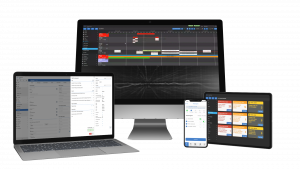Corporate flight departments, flight operators and charter operators have control over nearly every part of a business aviation flight. To make operations run more smoothly, there are several software providers and platforms that are specifically designed to ensure the flight planning and trip support are done efficiently and with minimal stress.
There is a mixture of software providers in the business aviation industry that have been pioneering a shared interest. These organizations are providing systems that can drive innovation, increase efficiency, and develop enhanced connectivity and integration capabilities with other platforms and data providers.
myairops have built a complete aviation management software suite or an enterprise resource planning (ERP) system that allows a complete management of all flight operations. This cloud-based software platform can be accessed anywhere with any internet-connected device.
The system manages a fully automated trip life cycle from start to finish. This includes everything from the moment the request comes into the system, the cost calculations, fueling, tasking, and anything in between. To accompany this flight management software, the myairops crew app provides functionalities to keep all members of the flight – pilots, cabin crew, maintenance users and passengers – connected through one application. The importance to this software is to ensure that everybody is on the same page and remains connected.

“Whilst there are specialist flight planning tools for the detailed planning of a flight – which includes routing, weather, overflight avoidance, obstacles, NOTAMS and so on – before the flight gets close to needing a flight plan, you first need a system to manage the end-to-end lifecycle,” says Tim Ford, president of myairops. “When the initial demand for a trip is received, the system allows the details to be captured, including routing and time information, details relating to the passenger manifest and catering requirements.”
“This information is then used to generate automated tasks within the system that allow the people responsible for managing the trip to know everything that needs to happen, such as purchasing overflight permits, arranging fuel, passing APIS information, immigration authorities, and arranging parking and handling.”
Once a flight is airborne, the flight planning and trip support operations team can fully track it directly within the myairops flight system. In here, they can determine if there are going to be any delays, they can see when it’s going to depart and when it’s expected to land. The knock-on effect from any delays is easily trackable within the system and the flight operations team can react accordingly, allowing for an easier and seamless transition. All information can be effectively communicated through to the in-flight team via the crew app.
In 2021, the myairops system had managed over 250,000 passengers across over 130,000 flights. Combine this with approximately 800 crew members using the crew app across the globe.
Since then, myairops are continuously developing our software and providing ways to tailor and configure the workflow and how information is captured. Having a flexible planning system is paramount to success.
“Some operations want the fuel information to be captured pre-flight, while others want it handled post-flight when the crew have completed their flying for the day,” says Tim.
“As we have expanded our operations and support into North America, we have added support for VOR checks and for the recording of hours and cycles across aircraft assemblies.”
“A major capability uplift that we have provided recently is completely automated notifications of trip changes directly to the crew without any need for human intervention. Key to this feature is that it doesn’t overwhelm the crew with updates when many changes occur.”
myairops integrates with a wide variety of other software and data providers and the crew app is also one of them. The list of connected systems and data sources includes fuel pricing information via platforms like FuelerLinx; Connectivity to FlightBridge for support managing crew HOTAC, and connections to Spire Aviation to get accurate ADS-B positional information.





